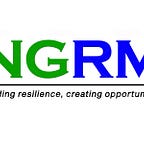Here is how to prevent a violent aftermath to the US presidential elections
From advising world leaders, heads of multinational companies and humanitarian and international organizations, my career has involved identifying risks and helping humanitarian organizations and peace builders avoid worst case scenarios. My professional assessment is that the US Presidential election in November is likely to lead to widespread violence and potentially unparalleled protests across the country unless definitive peacebuilding plans are implemented in the coming weeks.
This assessment is based on several vulnerabilities.
US intelligence continues to highlight several countries, notably Russia and China, interfering in this election through a variety of disinformation tactics. While social media companies such as Facebook and Twitter remain vulnerable to exploitation and give rise to the possibility of key votes in swing states such as Pennsylvania and Nevada could be determined by foreign interference, which would provide both presidential candidates the opportunity to cry foul and declare an illegitimate election.
Meanwhile the country continues to grapple with the devastating COVID pandemic. Amid the importance of social distancing a sizeable proportion of Americans will vote by mail and election night is unlikely to herald a unanimous winner. Recent polls indicate that President Trump may fare better among those voting on the day and raises the potential for the president to declare victory on election night before all the votes are counted and then rely on his support among media outlets such as Fox News and Breitbart to legitimize his position. Such a scenario is likely to incite widespread protests and violence from a wide range of groups, with a minority likely to resort to violent tactics.
The election is also occurring at a time of heightened political volatility across the US. A combination of the country’s deep political divide between Democrats and Republicans, the impact of COVID-19 on citizen’s livelihoods and employment and the growth of domestic terrorist groups contributes to the potential for widespread disruption and violence. Based on recent months events, this might well include far-right terrorist attacks against prominent democratic figures and media outlets, protesters, and the targeting of minorities such as LGBT community, refugees and migrants. While protesters from the left seem likely to congregate around corporate organizations which support President Trump, evangelical houses of worship and potentially controversial political figures from the Republican party.
To avoid a worst-case scenario and reduce tensions, several peacebuilding strategies more common in fragile and developing countries should be adapted.
First, political figures from both parties must communicate through the media and technology platforms how the vote is likely to play out and the likely timescale before a final vote is expected in the best case and worst case. Both political parties can communicate this through Facebook, Twitter and popular media stations. This will ensure that the American voters can anticipate that election night is not likely to bring the definitive result and decrease the likelihood of either party circumventing this.
Second, social media companies must make unparalleled efforts to prevent foreign and domestic platforms from using their platforms to confuse voters. Facebook has already made significant investments and efforts to improve its ability to remove inflammatory content and ban political ads the week before the election takes place. But this is not enough. There must be constant coordination with other social media platforms and the intelligence agencies to reduce the risk of platforms being used for mis and dis-information. In the days following November 3 these same platforms should continue this coordination to limit the risk of factions on the right and left using social media to spread conspiracy theories and incite violence.
Third both political parties must adopt contingency plans to call for calm in the event of a disputed or contested election. Such plans will include careful coordination with the media, state leaders and senior members from both parties. A prepared and structured political response can ensure that resulting protests and violence are only fringe events rather than leading to mass protests, disruption and violence.
Fourth the police are likely to have an important role to play in keeping peace. Heightened racial tension and recent events have developed a mentality of “blue lives matter” versus “black lives matter” but the police must be neutral and avoid inflaming the situation through violent tactics against protesters. This will likely involve the widespread use of community-policing based on building trust and dialogue with protesters and aim to defuse escalating tensions.
The US is very vulnerable to a contested election and potentially devastating consequences. Based on recent weeks there will remain an underlying risk of violent protests and potential domestic terrorist attacks. But these risks can be considerably reduced and managed if both political parties work together to ensure the process is managed responsibly. By adopting these peacebuilding strategies events that have occurred in many fragile and developing countries can be avoided and the US proud democratic tradition continued.
